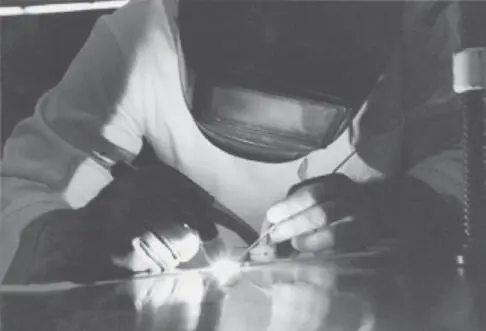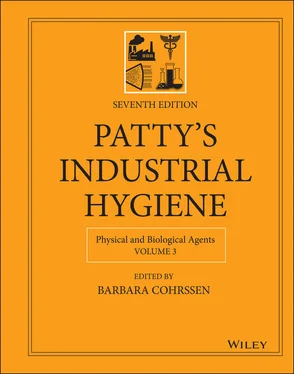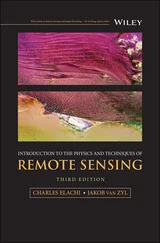For most occupational exposures to solar radiation, the hazards – principally skin cancer, sunburn, and cataract due to solar UV – will not be different from those to the general public, except that workers may be exposed for longer times than the general public. Significant solar UV dose can be received at any time of the day between sunrise and sunset. Although the solar irradiance decreases when the sun is low in the sky, the direct rays will intercept a larger cross section of a standing person's body than when the sun is high overhead. Outdoor workers may receive actinic UV‐radiation doses several times higher than the TLV during a daytime work shift. Additionally, solar IR radiation can contribute to heat stress.
Unless direct measurements of erythemal effective radiation are made (see Section 4.2.2), the Global Solar UVI is often the most convenient means to assess solar UV risk. The UVI is often reported along with the weather forecast in the news media and is available online from meteorological services in many countries (63). The UVI is a dimensionless number that is computed from the erythemal effective irradiance from solar radiation between 250 and 400 nm, E solar eff. E solar effmay be measured using either a spectroradiometer or a broadband detector at a monitoring station, or it may be modeled based on atmospheric conditions (64). The UVI is equal to E solar effmeasured in W m −2, multiplied by 40 and rounded to the nearest integer. For example, if the erythemal effective solar irradiance is 0.16 W m −2, the UVI is 6. Because the solar irradiance changes throughout the day, the UVI reported in weather forecasts is usually the predicted maximum level for the day, occurring around solar noon (65). The UVI forecast can be presented together with simple messages to the public (66):
UVI 1 or UVI 2. Low risk. No sun protection is required.
UVI 3–7. Medium to high risk. Seek shade during midday hours. Wear shirt, hat, and sunscreen.
UVI 8–11+. Very high to extreme risk. Avoid being outside during midday hours. Seek shade. Be sure to wear shirt, hat, and sunscreen.
Although these risk level designations and messages may be appropriate for members of the general public engaged in part‐time outdoor leisure activities such as sunbathing, they do not adequately address the risk to workers who might be in the sun for eight hours or more a day. On the other hand, since the solar irradiance is determined for a horizontal surface, the noontime UVI based on solar irradiance could tend to overestimate the risk to workers in a vertical posture.
6.1.1 Controls for Solar Radiation Hazards
To the extent possible, job tasks should be located indoors or under shade when exposure to solar radiation presents a risk. Work that must be conducted outdoors should be scheduled to avoid sun exposure during the period of highest solar irradiance, two hours before to two hours after solar noon.
In many occupations, however, outdoor work is unavoidable, and the only practical means of controlling exposure is the use of skin and eye protection. Protective clothing should be chosen to provide an adequate protection factor and the best coverage possible. Acceptance of protective clothing by the workers is also an important consideration (67), however, and may need to be balanced against the level of protection offered by different styles and fabrics. Sunscreens should be used on those parts of the body that are not protected by clothing but not as a substitute for wide‐brimmed hats and protective clothing. According to the American Academy of Dermatologists, sunscreens should have a minimum SPF of 30, and provide protection from UV‐A as well as UV‐B radiations (68).
6.2 Welding, Cutting, and Brazing
Arc welding produces intense radiation across the optical spectrum, from near‐IR to UV‐B and UV‐C. Erythema (similar to sunburn) and photokeratoconjunctivitis (“welder's flash”), a painful inflammation of the cornea and the lining of the eyelid, are common acute effects of overexposure to UV‐B and UV‐C from welding arcs (69). Arc welders could be at increased risk of skin and ocular cancers due to their high UV‐B and UV‐C exposure (70). Thermal burns from hot metal during welding could contribute to this risk (71). Repeated eye burns among welders have been found to be associated with the risk of ocular melanoma (72). High levels of ozone may also be generated during gas shielded arc welding (73).
Requirements for eye and face protection and protective clothing for welders were established by the American Welding Society (AWS) in the ANSI Z49.1:2012 standard, Safety in Welding, Cutting, and Allied Processes (74). The UV output of the welding process depends upon the type of welding, the material being welded, and the arc current. The appropriate eye protection filter for the welder is specified in the ANSI Z49.1 standard by shade number based on characteristics of the welding process. Welding helmets with autodarkening filters enable welders to see through the filter under ambient light while they position their work and strike the arc. A light sensor then detects the arc flash and activates an electronic device that causes a liquid crystal filter to switch from light to dark. This eliminates the old practice by some welders, who left their welding helmets flipped up until the arc was struck (62). Practitioners should ensure that equipment in use meets the requirements of the table titled “Switching Index Requirements for Automatic Darkening Welding Filter Lenses” that was provided in ANSI/ISEA standard Z87.1‐2015 (75).

FIGURE 11A welder wears helmet, gloves, heavy jacket, and cap with neck drape.
Source: Photo by OSHA.
Protective clothing is required to protect the skin from radiation as well as other hazards of welding, including ignition, sparks, and electric shock. An example of good coverage by protective clothing is illustrated in Figure 11. Workers such as maintenance and repair personnel, whose main job function is not welding, sometimes neglect to use adequate skin protection during welding tasks. Care should be taken to ensure that workers who do not routinely perform welding are aware of the need for skin protection. Full‐time welders, too, might occasionally put themselves at risk by forgoing some protective clothing, as illustrated in Figure 12(76).

FIGURE 12A welding technician neglects to wear UV‐absorptive gloves while repairing an aluminum‐lithium weld.
Source: Photo by NASA (76).
In addition to the exposure to the welding operator, the arc and reflections from the arc present a hazard to assistants and bystanders. Guidance on the safe viewing distance for bystanders to control UV hazards to the skin and eye is available from AWS (77, 78). Another control measure for the protection of bystanders is to surround the welding operation with curtains. Transparent plastic welding curtains containing suitable dyes can attenuate both UV and hazardous blue‐light radiation to acceptable levels while still providing sufficient visibility of the welding process to allow visual supervision by a bystander (79).
6.3 Photocuring of Coatings in Manufacturing
Several regions of the optical radiation spectrum have been used in manufacturing for drying and curing coatings and other materials.
In the powder coating process, an alternative to solvent‐based painting or finishing, pigment in a resin powder matrix is deposited on the substrate by electrostatic attraction and heat is then used to melt the powder so that it forms a smooth, solid layer. IR lamps or ovens are often used as the heat source for the melting process.
Читать дальше














